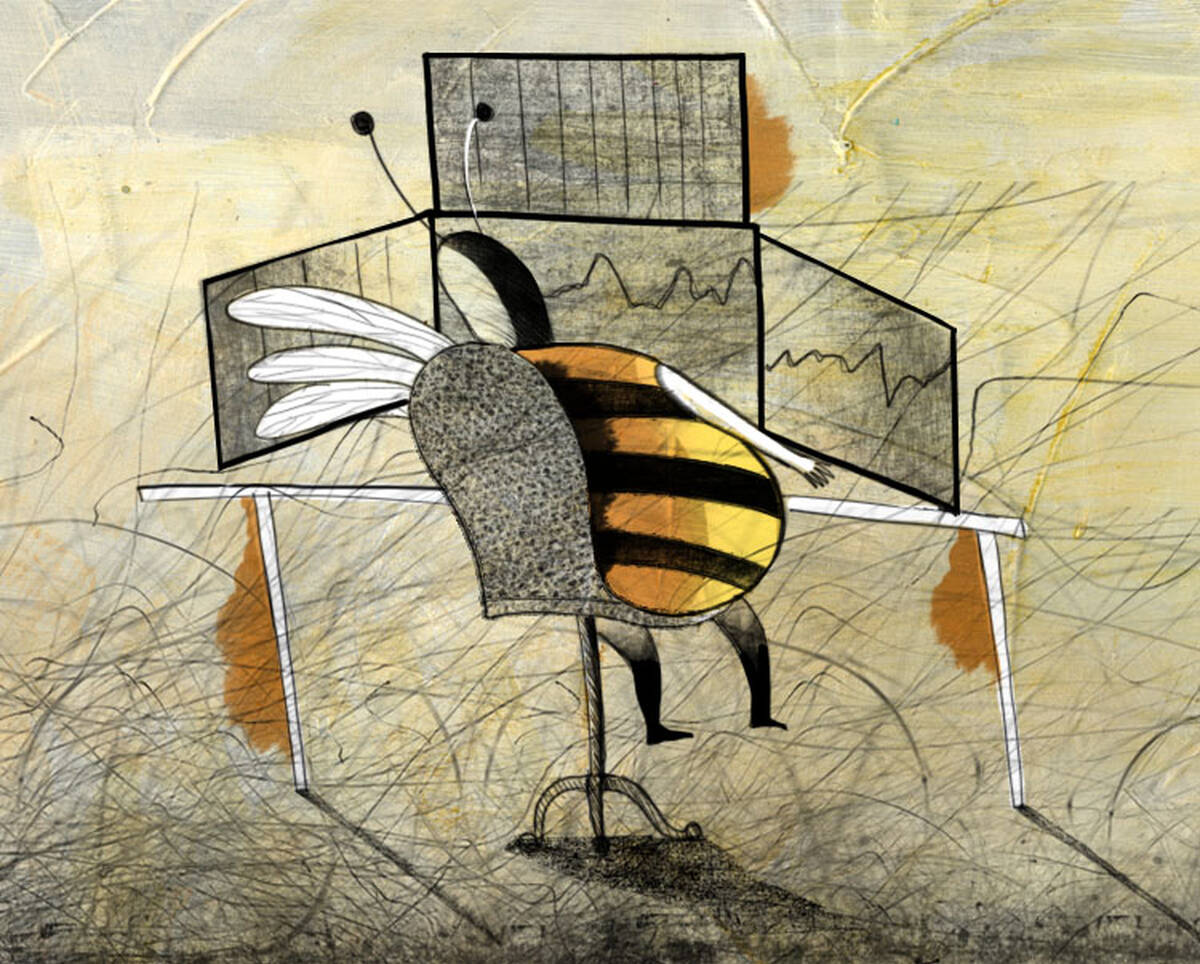“If you look at a day trader, they may trade fifteen to twenty different types of stock,” says Brian Uzzi, a professor of management and organizations and the faculty director for the Kellogg Architectures of Collaboration Initiative. This begs the question: How do these traders decide which stock to start trading on a given day—and how long to trade that stock before moving on?
“Once you start trading, when do you say to yourself, ‘Oh, I should stop trading here and spend my resources someplace else’?” asks Uzzi. “Maybe you’re spending a little bit too much time focusing on Apple and Apple’s movement, and as you do that, you miss important changes that go on at Google or at Microsoft.”
As it turns out, stock traders are not the only ones who have to determine whether to continue “exploiting” one resource or start “exploring” others. The two principles actually arise from ecology. Bees, for instance, must decide when to continue foraging for nectar in one patch and when it is time to move on to greener pastures.
“You can actually calculate how much energy an animal is expending the longer they stay in a patch, versus how much energy they [would spend] traveling to a different patch,” says Uzzi. And as with trading, a patch’s popularity with competitors can change the calculus considerably. Given these similarities, might ecological models of foraging be able to explain trading behavior on Wall Street?
A Simple Strategy
To answer this question, Uzzi teamed up with three colleagues: Serguei Saavedra of the Doñana Biological Station, R. Dean Malgrem of Datascope Analytics, and Nicholas Switanek, a postdoctoral fellow at the Northwestern Institute on Complex Systems. The researchers analyzed two years’ worth of second-by-second data, depicting over 300,000 trades made by day traders at a trading firm. The 3000 stocks traded during this period represented a variety of exchanges (including NYSE, NASDAQ, and the “blue chip” exchange) and different industries.
The researchers found that foraging models could indeed explain the behavior of these day traders, who made trading decisions to optimize short-term returns. Interestingly, traders appeared to follow a very simple pattern: first, they hit up whichever stock had previously performed best for them, followed by the stock that had performed second-best, and so on.
Given all of the real-time information that traders have access to—data from Bloomberg, CNN, even chatter from their own colleagues—the sheer simplicity of the strategy is surprising. Rather than calculating a decision on the fly based on all of the available data, says Uzzi, “our brains search for a pattern they recognize, and when they see a pattern they recognize, they tend to habitually react to it.”
Thinking Like Bees
The strategy also resembles the one used by foraging bees. “The bumblebee starts off its day going to the place where it had its best returns the day before … until it’s no longer getting a return,” says Uzzi, “so it’s expending more bodily energy than the resources it’s taking in. Then it switches to the second-best thing it had found the day before, and then the third-best thing. It’s just a very simple hierarchy.”
Simple or not, it is a strategy that works well enough in the animal kingdom. But it is less ideal for stock traders, for whom optimizing long-term returns may require a different tactic. To avoid leaving money on the table, traders should approach each opportunity thinking, “What has worked for me over the past six months?” instead of “What worked for me yesterday?”
Part of what is driving the short-term thinking, says Uzzi, is the intense focus on competition. Traders can see what their colleagues are doing, so they know where all of the action is in the market. “The belief is that when you have lots of competition, you become focused on the threat of that competition essentially wiping you out, [so] you focus a great deal on survival from day to day, rather than thinking about a longer-term strategy,” Uzzi says.
A Better Way?
So what can traders do to optimize long-term returns over short-term ones? The researchers never looked at this question explicitly, but Uzzi cautions against shying away from competition altogether: competition is still important for driving efficiency.
In the end, then, traders need to find a balance between attending to short-term competition and keeping the long view in mind. “Nature has faced all these same constraints. But over millions of years of evolutionary processes, it has found a way to delicately balance this,” says Uzzi. He jokes: ““Perhaps, if big data can shrink these natural processes into a few years, we too will arrive at this magical balance!”



